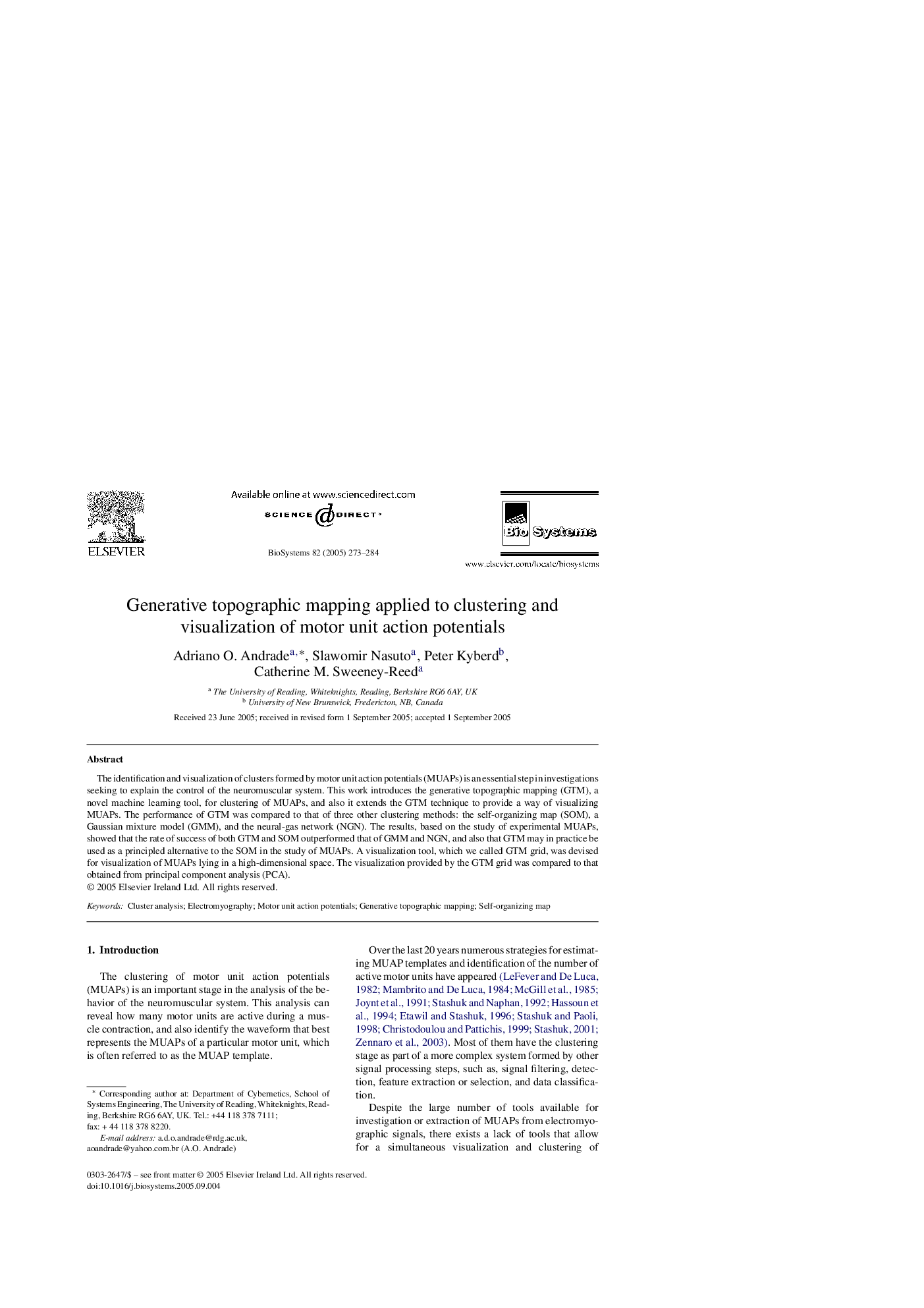| Article ID | Journal | Published Year | Pages | File Type |
|---|---|---|---|---|
| 10884648 | Biosystems | 2005 | 12 Pages |
Abstract
The identification and visualization of clusters formed by motor unit action potentials (MUAPs) is an essential step in investigations seeking to explain the control of the neuromuscular system. This work introduces the generative topographic mapping (GTM), a novel machine learning tool, for clustering of MUAPs, and also it extends the GTM technique to provide a way of visualizing MUAPs. The performance of GTM was compared to that of three other clustering methods: the self-organizing map (SOM), a Gaussian mixture model (GMM), and the neural-gas network (NGN). The results, based on the study of experimental MUAPs, showed that the rate of success of both GTM and SOM outperformed that of GMM and NGN, and also that GTM may in practice be used as a principled alternative to the SOM in the study of MUAPs. A visualization tool, which we called GTM grid, was devised for visualization of MUAPs lying in a high-dimensional space. The visualization provided by the GTM grid was compared to that obtained from principal component analysis (PCA).
Keywords
Related Topics
Physical Sciences and Engineering
Mathematics
Modelling and Simulation
Authors
Adriano O. Andrade, Slawomir Nasuto, Peter Kyberd, Catherine M. Sweeney-Reed,
